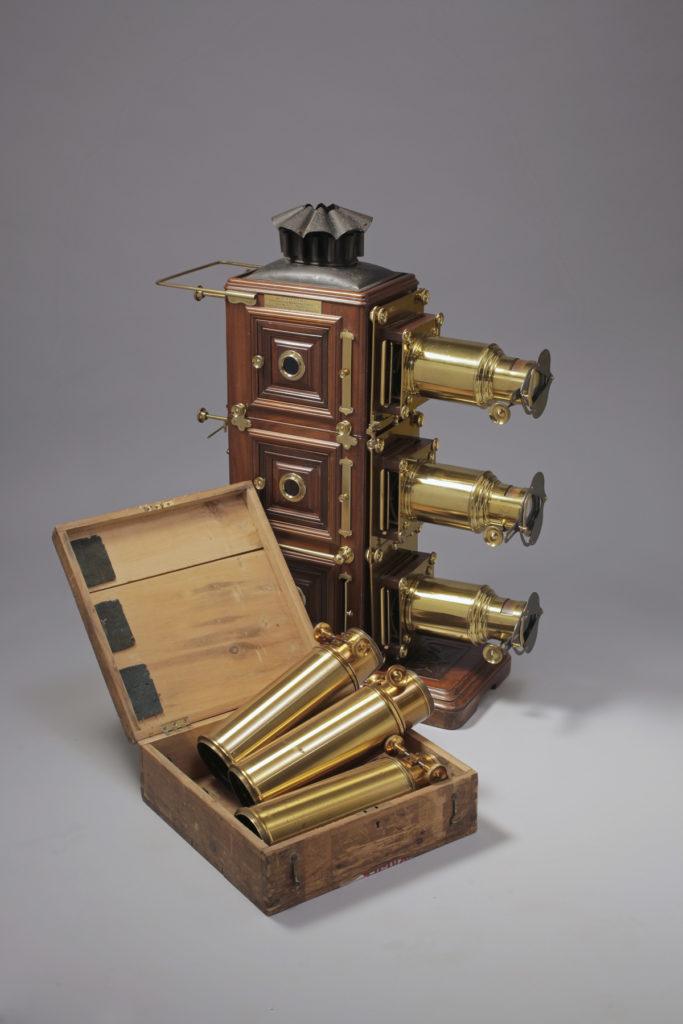The triple projection lantern
The idea of superimposing two or three projection systems came into being with a patent submission by G. Davies, A.G. Busby and W. Bentley dated 1872. From the 1880s, the main producers of projection materials made it a point of honour to include prestigious triple lanterns in their product ranges, enabling many subtle variations during projection. The English were the leaders in this field.
This triple lantern was manufactured around 1895 by William Charles Hughes, an English optician of the highest reputation, with his dispensary established in London, at Brewster House, 82 Mortimer Road from 1883. Producing lanterns and various projection materials, Hughes submitted a whole series of patents between 1875 and 1893. He was also a pioneer of the earliest English cinematographic equipment, even producing a cinematographic street viewer.
Beautifully manufactured out of mahogany and brass – this lantern in two parts and also usable as a double lantern, still has – which is most unusual – its original system of oxhydric lighting. Held in special bags, and later in bottles, the oxygen and hydrogen under pressure fuelled the lantern via a system of rubber tubing connected to brass taps, enabling the regulation of their outflow onto the incandescent lime rod, or the restriction of their inflow to reduce the light, in order to produce a fade-out effect. A second set of longer focus lenses was used for large areas. The lenses were mounted on a mobile system, making it possible to incline them slightly in order to fully blend the three images.
Such a lantern was, for example, ideal for the production of the “windmill in the snow” series, where the sequence of daytime, night-time and then snowbound scenes was achieved using two projection elements, with the third being used for the moonlight effect, the arrival of the swan (animated plate), or perhaps falling snow. During the show, several people were involved around the lantern, each with a precise function, as well as the musician(s) and the narrator.


